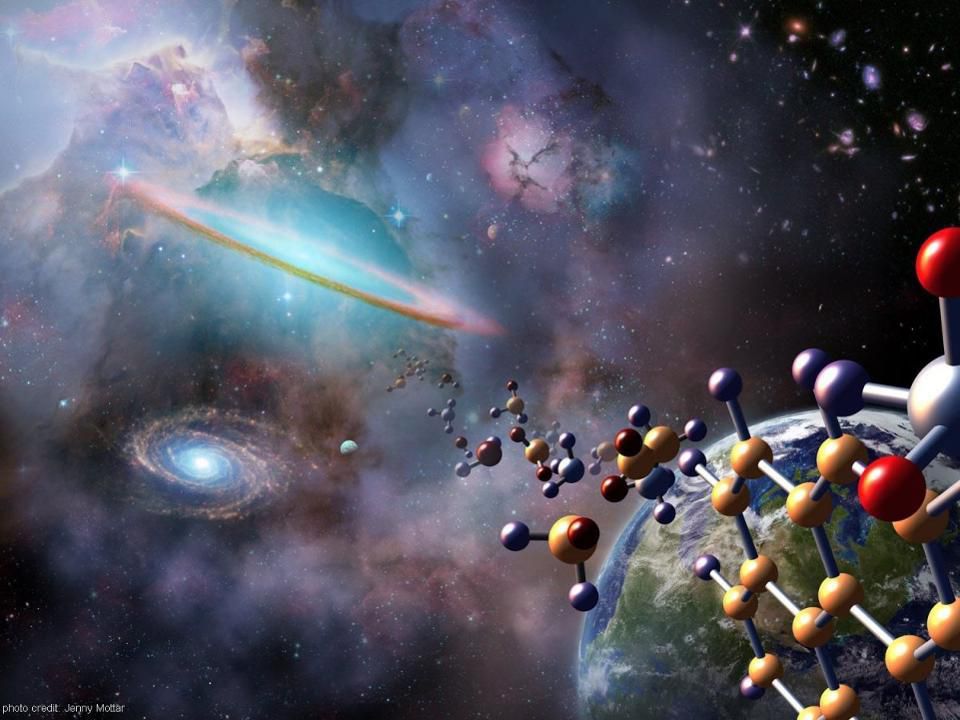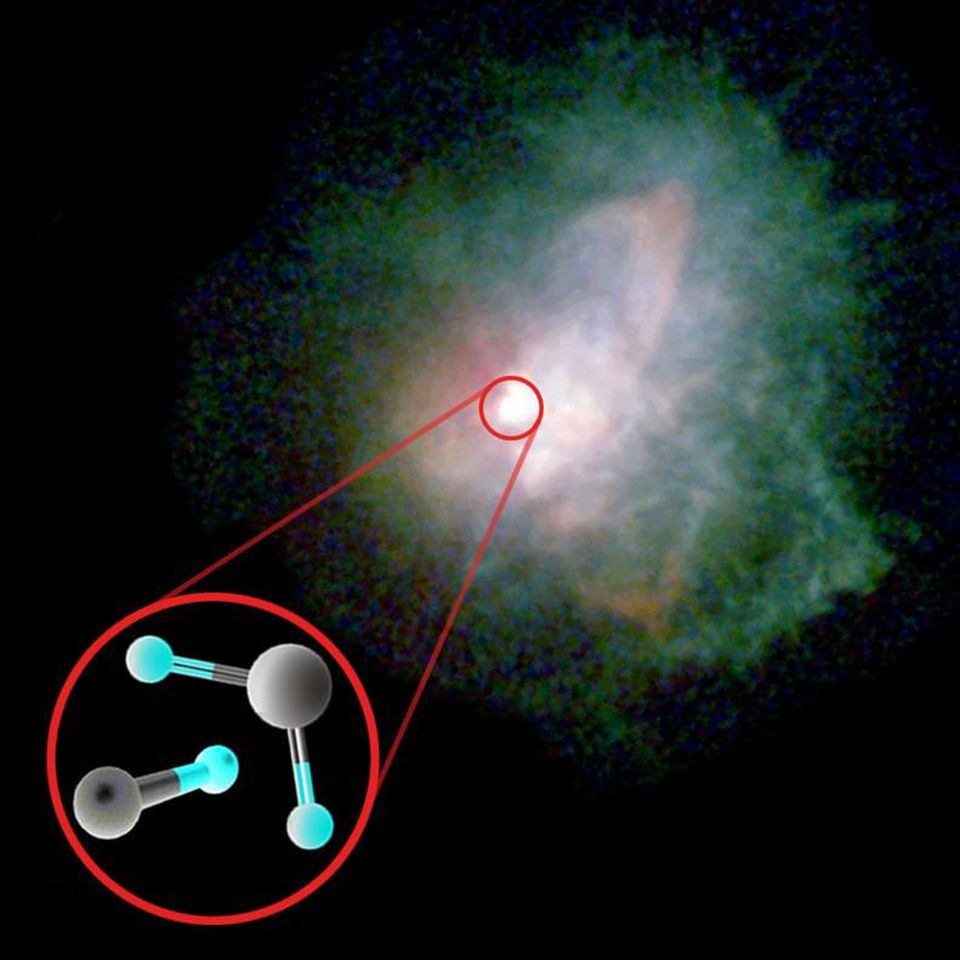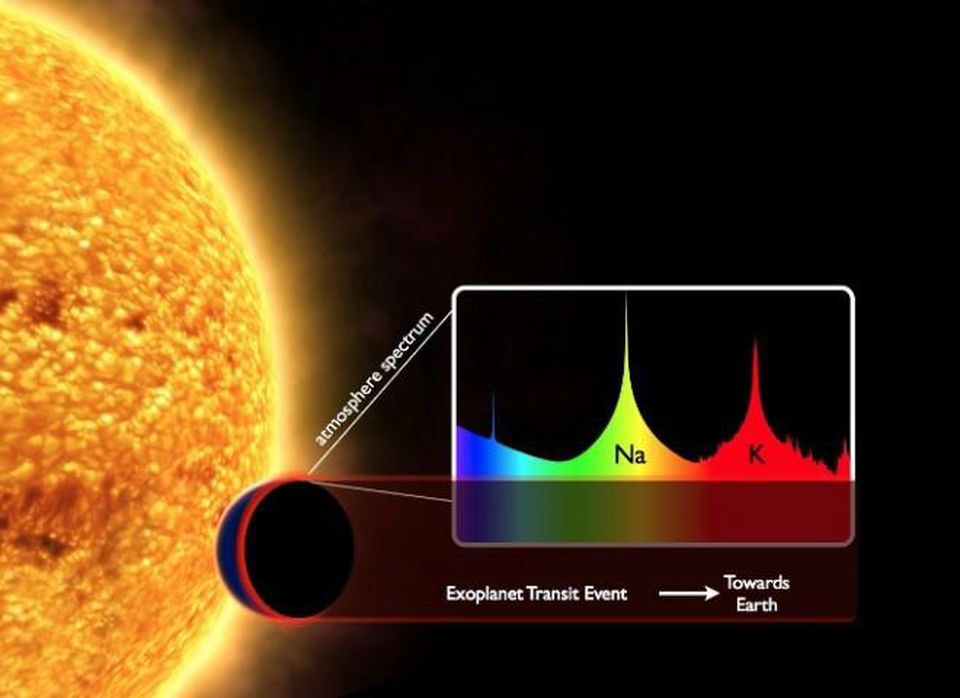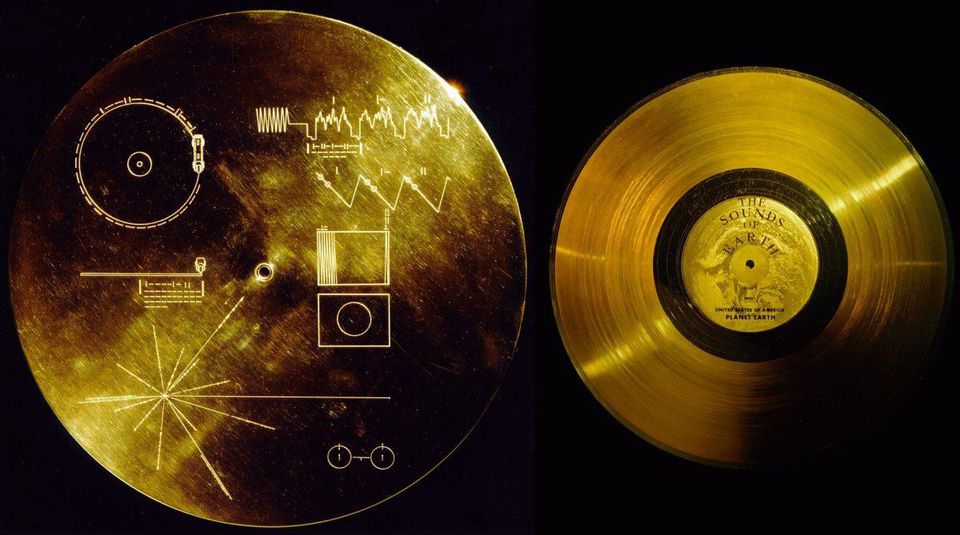Three hopes of mankind on the detection of aliens
- Transfer

In the interstellar space, atoms are able to bind into molecules, including organic, in the same way as on planets. If the ingredients of life are everywhere, then life can be ubiquitous.
Since people raised their eyes to the sky, to planets, stars, and galaxies outside our home world, our imagination has been filled with the possibilities of life on other planets. Approaching the issue from a scientific point of view, we are still waiting for the first confirmed information about the existence of life outside the Earth. Complex and diverse forms of life on Earth are the result of more than four billion years of evolution, but in space, the ingredients of life are found everywhere. We began to discover organic molecules elsewhere in the solar system, in interstellar space, and even around other stars. How long do we have to wait until the first signs of life outside our world are found? There are several ways that we use to search for life, and which of them will be crowned with success, we can only guess.

Structures in the meteorite ALH84001 , arrived to us from Mars. Some believe that these structures may be ancient Martian life
To create life, fundamental ingredients are required, which, apparently, are necessary for basic life processes — pure elements of the periodic table. To obtain them, it is enough to change only a few generations of stars, living and dying due to the burning of their nuclear fuel. We found stars with rocky planets, which are seven billion years older than Earth, and with all the heavy elements necessary for life. We have discovered earth-sized worlds in potentially habitable zones around their parent stars throughout the galaxy. And we found organic molecules, from sugars to amino acids and ethyl formate - a molecule that gives raspberry its aroma [controversial statement, according to Russian chemists / approx. transl.] - in different places, from asteroids and young stars to protoplanetary disks and molecular gas clouds.

Signs of organic molecules that generate life are found throughout space, including large, nearby regions of star formation — for example, the Orion Nebula. Soon we will be able to look for signs of biological processes in the atmospheres of world-sized worlds that are in orbit around other stars.
Taking into account all this, according to our calculations, there are more than 10 12planets, and therefore the chances of having a life, only in one Milky Way. But there is a big difference between planets with ingredients for life and true, genuine alien life. We do not know whether there are other examples of life in the Universe other than those we see on Earth. Scientists are almost certain that if there are similar ingredients and the same laws of nature, the existence of a universe in which life on Earth would be a unique phenomenon is unlikely, but we cannot draw conclusions until we find evidence. Moreover, we still have not been able to answer one of the most important questions of science: how does non-life get life?

Organic molecules are found in star formation regions, in star residues and interstellar gas, throughout the Milky Way. In principle, the ingredients for rocky planets and life on them could appear in our Universe rather quickly, long before the Earth appeared
Our existence proves that this can happen. We can imagine that if life appears somewhere in the Universe, it can reach three different levels:
- Life begins on the planet, but does not last long, does not flourish and does not last forever.
- Life flourishes, supports itself, exists for billions of years, seriously changing the surface of the planet on which it exists.
- Life becomes intelligent, technologically advanced, capable of messaging and / or traveling in space.
Obviously, more advanced features will be more interesting, but probably more rare. However, sometimes rare things are the easiest to find because they are so different from everything else. And here are the various methods that we use to search for these different forms of life, giving mankind three different hopes of finding life outside the Earth.

One of the most interesting and least costly ideas for searching for life in the ocean of Enceladus is the flight of the probe through the material ejected by the geyser, collecting samples and analyzing them for the presence of organic matter
1) The search for life in the solar system.On Earth, life flourished for billions of years, but other worlds do not look so lucky. If life is everywhere, then it is unlikely to go beyond the level that we consider primitive. Mars and Venus in the past could be wet and mild, like Earth, but today Mars is cold and deserted, and Venus is poisonous, cloud-covered hell. Meteorites falling to Earth contain not only those amino acids that are involved in terrestrial life processes, but also many others. Under the surface of moons of the type of Europe and Enceladus there may exist liquid oceans, conditions in which may be similar to conditions in hydrothermal sources — full of life, by the way — located at the bottom of the Earth’s oceans.

Deep under water, around hydrothermal springs, without access of sunlight, life on Earth is flourishing. How to create life from non-life is one of the greatest open questions of science, but if life can exist there, then it may be in the seas of Europe or Enceladus.
Although we have never found evidence of the presence of living beings, in the present or the past, on other worlds, such a possibility is very tempting. Mars has sedimentary rocks formed in the wet past; Do we find there fossils? In Europe and Enceladus, there are whole oceans to explore under the icy surface; Will microbes be found there or something better? There is even the opinion that diatomsAn example of a primitive life form found in fragments of meteorites may be of extraterrestrial origin. This is the least developed form of life that we can imagine, but we have the advantage of physical access, the ability to visit and measure many worlds. If primitive life forms are ubiquitous, then a sufficiently thorough study of our solar system will reveal this.

The study of light reflected from a planet, and absorbed light filtered by the atmosphere, is being developed as a technology for studying the contents of the atmosphere and surface properties of distant worlds. In the future, it will be possible to add technology to search for signs of the presence of organic matter.
2) Search for exoplanets around other, closely spaced stars.Over the past 25 years, the science of studying exoplanets has experienced explosive growth, evolving from an infant state to a treasure of information; now it is known about the existence of thousands of planets outside the solar system. Many of them are small, rocky, at the right distance from the star, and if they have an earth-size atmosphere, then there must be liquid water. We will not be able to detect individual microbes or fossils on them, as we could find life within the solar system, but there is an indirect method for determining the presence of life on them: the search for changes to which life exposes the atmosphere of an alien planet.

When a planet passes in front of its parent star, part of the world is blocked, but if there is an atmosphere on the planet, the light is filtered through it and gives rise to absorption and emission lines that a sufficiently advanced observatory can detect. If there is a large amount of organic molecules or molecular oxygen, we can probably detect it.
The Earth is the only planet known to us that contains this amount of molecular oxygen: 21% of our atmosphere is O 2. The reason for this is that life for billions of years has thrown this waste into our atmosphere. We believe that oxygen is necessary for life, but this is only because the animals evolved as a result of evolution, utilizing this ingredient, developing aerobic respiration, and using this recycled this abundant molecule. Our technologies are improving, and we must be able to measure the molecular composition of the atmospheres of exoplanets, and potentially even get their images directly to look for clouds, oceans, changing seasons and landscaping continents. We have every reason to believe that already in this century we will be able to find life on another world if we look for it with the right method.

A massive transmitter could send a detectable radio signal from an alien outpost, but some believe that this signal will be optical
3) Search for signals of intelligent aliens. On Earth, unicellular life has existed for millions of years until multicellular organisms appeared. With the Cambrian explosion , when complex, multicellular, differing organisms appeared, it was 500 million years before the emergence of a sensible and technologically advanced civilization. And at the same time, mankind has already begun to transmit signals to the stars, and it has reached a state in which we can already determine the signs of the presence of intelligent aliens if they give signals of sufficient power. The SETI project and its active complement, the METI project , is the most risky search option for aliens with the highest reward.

Theories that the first detection of the alien mind will occur using radio waves, have been put forward for a long time. But the fast bursts of radio waves are probably not; we are still trying to find evidence of intelligence in them, if they are there at all.
In the 1960s, we assumed that aliens would attempt communication on radio waves. After 50 years, we are not so sure about this. What types of alien signals can exist? How do we decipher them? How would they transmit and receive interstellar signals? Have they become a space civilization capable of covering huge interstellar distances? Ideas like the Breakthrough Starshot projecttranslate the latest opportunity from science fiction into a real opportunity. If a signal arrived on Earth, or, better yet, a spacecraft, it would be the greatest shift in our understanding of the Universe and our place in it since we first looked up to the sky.

The gold-plated aluminum gold cap on the Voyager protects it from micrometeorite bombardment and gives the key to playing and deciphering the location of the Earth.
Although it is still only a hypothesis, scientists say that life in the Universe should be commonplace, since the ingredients and the possibilities for its appearance appear almost everywhere. Probably, the chances of the emergence of life that has developed on the planet and supports itself to such an extent that it can change the properties of the atmosphere and the surface of the planet will be less. And the development of complex, diverse, multicellular creatures is even less. And the likelihood of the appearance of what we would regard as a rational, technologically advanced civilization may be so small that we may be alone in the Universe. But, despite the difference in the probability of these events, we are actively looking for all three types of life in very different ways. Which one will win when we discover the first signs of alien life?
But no matter which method is the first to pay dividends - it will still be the greatest day in the history of life on Earth.
